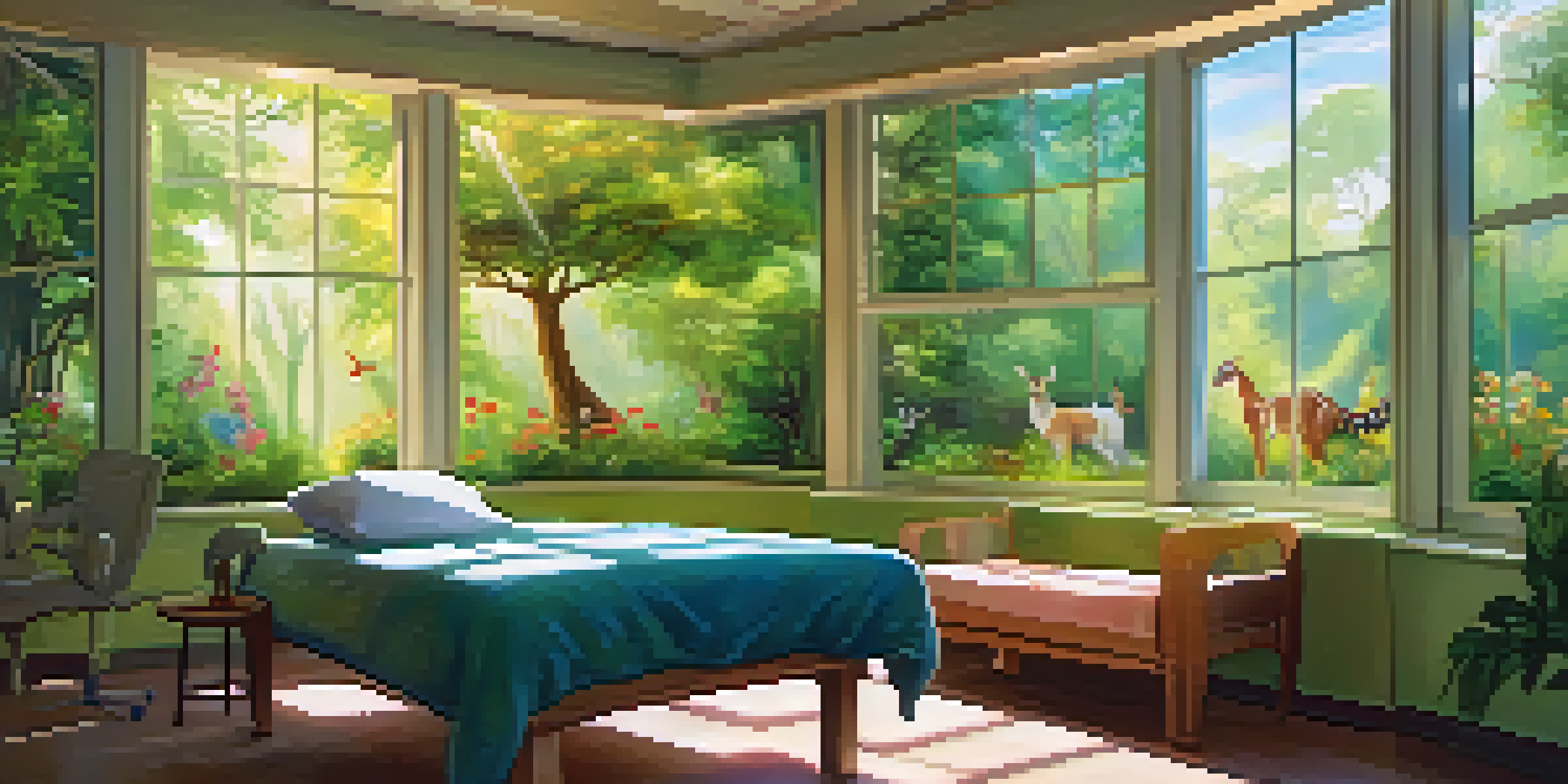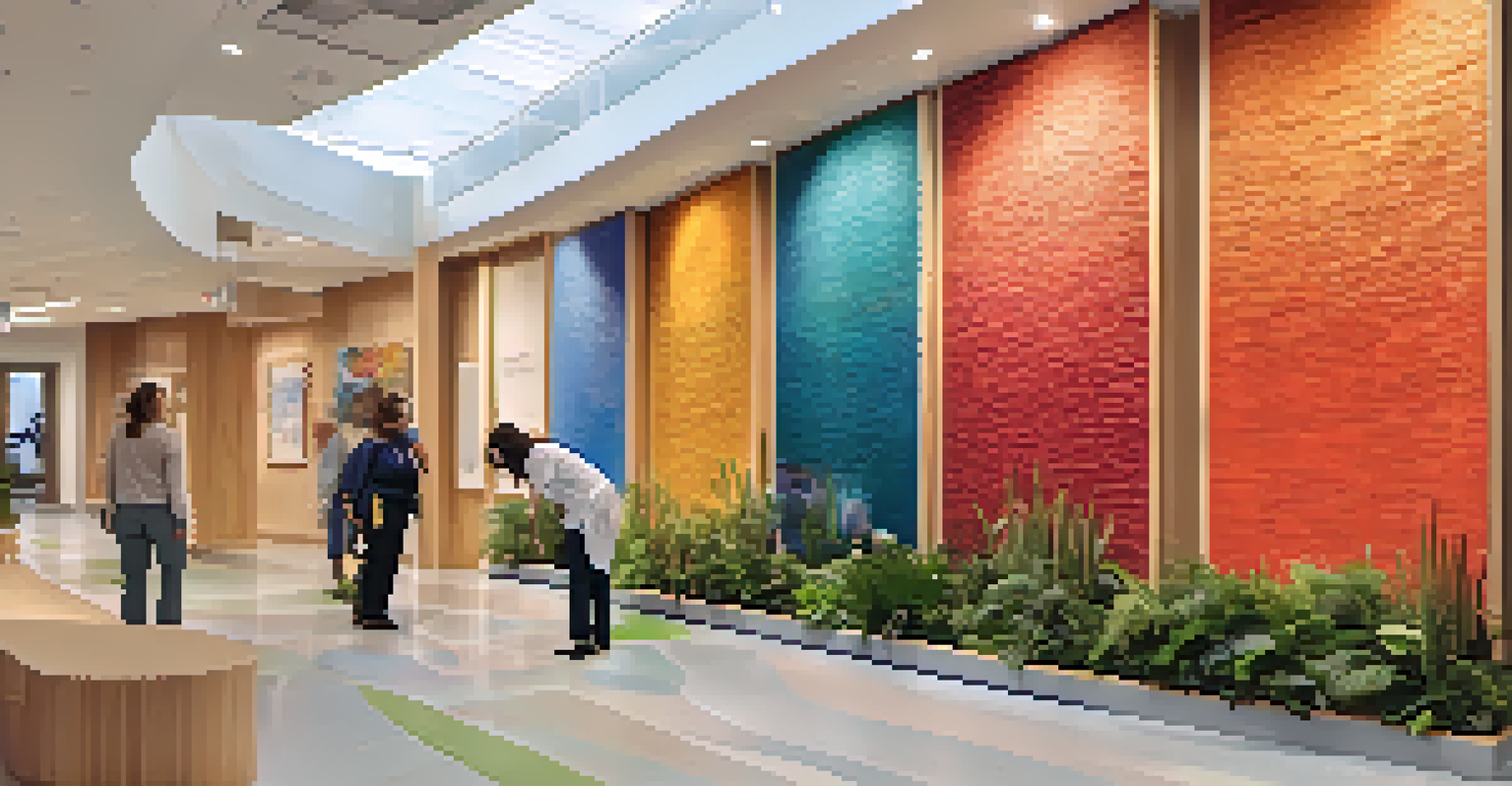Art in Healthcare: Creating Healing Environments

The Role of Art in Promoting Healing and Wellness
Art has a unique ability to influence our emotions and mental state. In healthcare, this influence can translate into improved patient outcomes. From calming murals to inspiring sculptures, the presence of art can create an atmosphere that promotes healing and wellness.
Art enables us to find ourselves and lose ourselves at the same time.
Studies have shown that patients exposed to art in their environment often experience reduced anxiety and pain levels. This is particularly important in healthcare settings where stress can hinder recovery. Art becomes a powerful tool, transforming sterile spaces into nurturing environments.
Moreover, engaging with art can foster a sense of agency and control in patients. Whether it’s through viewing art or participating in creative activities, patients can express themselves and feel more connected to their healing journey.
Types of Art Used in Healthcare Settings
Healthcare facilities employ a variety of art forms to enhance their environments. These can range from paintings and sculptures to photography and digital installations. Each type of art serves a different purpose, catering to the diverse needs of patients and staff alike.

For example, nature-themed artwork is often used to create a calming atmosphere, reminiscent of the outdoors. This can help reduce feelings of claustrophobia and anxiety, making the hospital feel less intimidating. Bright and vibrant art can also stimulate positive emotions and create a welcoming environment.
Art Enhances Patient Healing
The presence of art in healthcare settings can significantly reduce anxiety and promote a calming atmosphere, leading to better patient outcomes.
Additionally, interactive art installations have started to gain popularity. These spaces not only beautify the environment but also engage patients and visitors, offering them a chance to participate in the creative process, which can be therapeutic in itself.
The Science Behind Art and Healing
The relationship between art and healing is supported by various scientific studies. Research indicates that visual art can activate the brain's reward system, releasing dopamine and promoting feelings of pleasure. This biochemical response can significantly impact a patient’s mood and overall wellbeing.
The greatest respect is owed to the art of healing, which is the most noble of all the arts.
Furthermore, art therapy is an established practice that uses creative expression as a therapeutic tool. It has been shown to help patients cope with illness, trauma, and mental health challenges by allowing them to express feelings they may find difficult to articulate.
By understanding the science behind this connection, healthcare providers can make informed decisions about incorporating art into their facilities. This ensures that the art not only decorates but also serves a functional purpose in patient care.
Case Studies: Successful Art Integration in Hospitals
Several hospitals have embraced the integration of art into their environments with impressive results. For instance, the Cleveland Clinic has implemented an extensive art program that includes over 5,000 works of art displayed throughout its facilities. This initiative has been linked to enhanced patient satisfaction and reduced perceived wait times.
Another notable example is the Arts in Healthcare program at the University of New Mexico Hospital, which incorporates local artists to create culturally relevant artwork. This approach not only beautifies the space but also resonates with the community, making patients feel more at home.
Staff Wellbeing Through Art
Art in healthcare environments not only benefits patients but also enhances staff wellbeing by reducing stress and fostering a supportive workplace culture.
These case studies illustrate that investing in art can yield significant benefits for healthcare institutions. The positive feedback from patients and staff alike underscores the importance of creating a healing environment through thoughtful artistic choices.
Art as a Tool for Staff Wellbeing
It's not just patients who benefit from art in healthcare settings; staff wellbeing is also positively impacted. Aesthetic environments can reduce stress and burnout among healthcare professionals, leading to a more supportive workplace culture. When staff feel happier and more relaxed, it often translates into better patient care.
Incorporating art into break rooms and staff areas can create a refreshing escape from the demands of clinical work. Whether it’s through vibrant murals or calming landscapes, these spaces can provide a moment of respite during a hectic day.
Moreover, team-building art projects can foster camaraderie among staff members. Engaging in creative activities together can improve communication and strengthen relationships, ultimately benefiting the overall healthcare environment.
Community Involvement in Art Programs
Community involvement plays a crucial role in the success of art programs in healthcare settings. Hospitals can collaborate with local artists, schools, and art organizations to create a sense of ownership and connection within the community. This partnership not only enriches the art displayed but also strengthens community ties.
By showcasing local talent, healthcare facilities can reflect the culture and values of the surrounding community. This local touch can make patients feel more at ease and foster a sense of belonging, which is vital for the healing process.
Community Engagement in Art
Collaborating with local artists and community members enriches healthcare art programs, creating a sense of belonging and enhancing the healing process for patients.
Additionally, community art projects can engage patients and families, allowing them to participate in the creative process. This involvement can enhance their experience and promote healing through shared creativity and expression.
Future Trends in Art and Healthcare
As we look to the future, the role of art in healthcare is likely to expand. With advancements in technology, we may see the emergence of virtual and augmented reality experiences in medical settings. These innovative approaches can provide immersive art experiences that enhance patient engagement and comfort.
Moreover, the trend of personalized art therapy is gaining traction. Tailoring art experiences to individual patient needs can create more impactful therapeutic outcomes. This customization allows healthcare providers to address specific emotional and psychological challenges faced by patients.

Finally, the ongoing dialogue about mental health awareness will encourage more healthcare facilities to integrate art as a core component of holistic care. Emphasizing the connection between art and mental wellbeing will solidify its role in fostering healing environments.